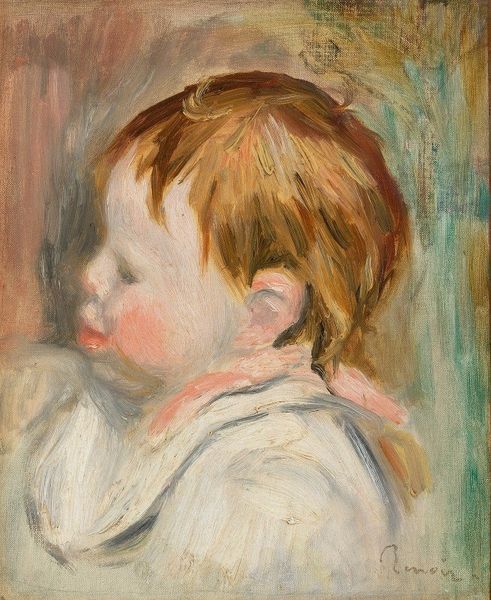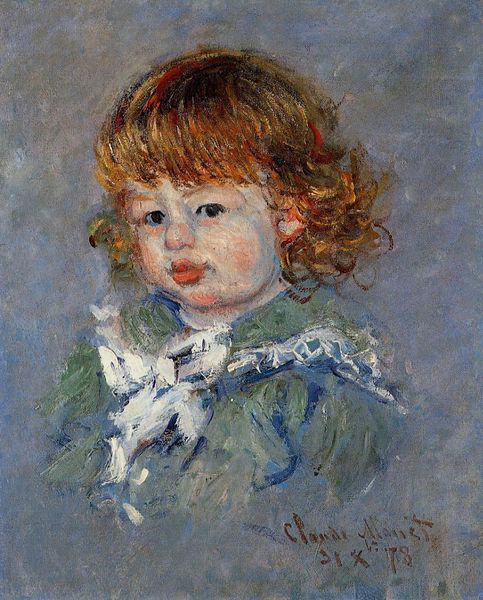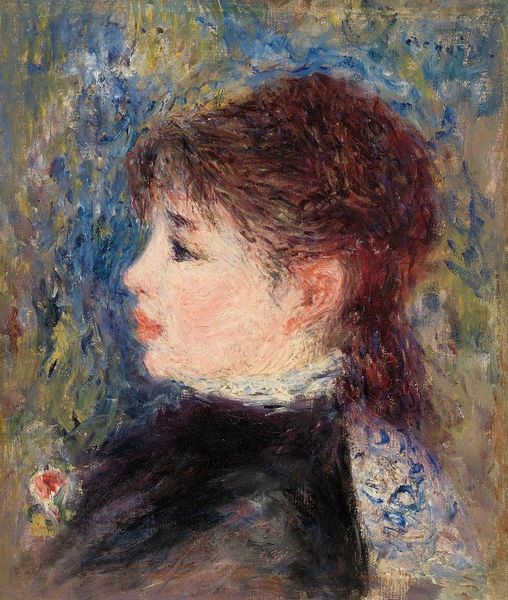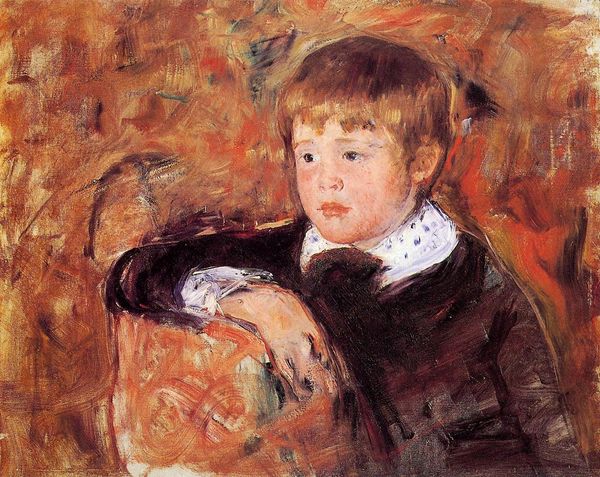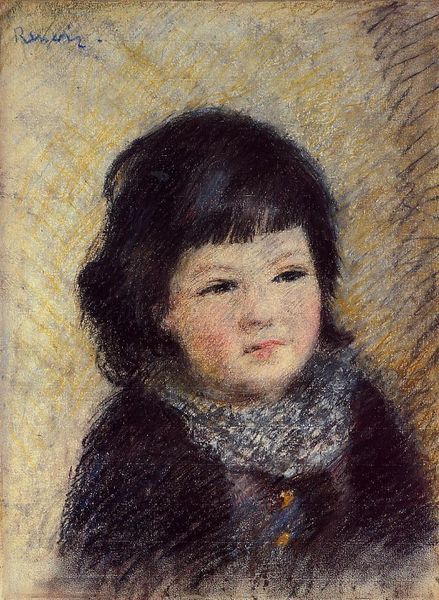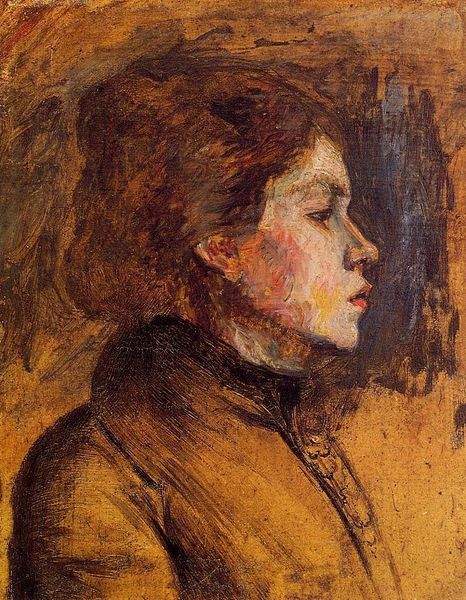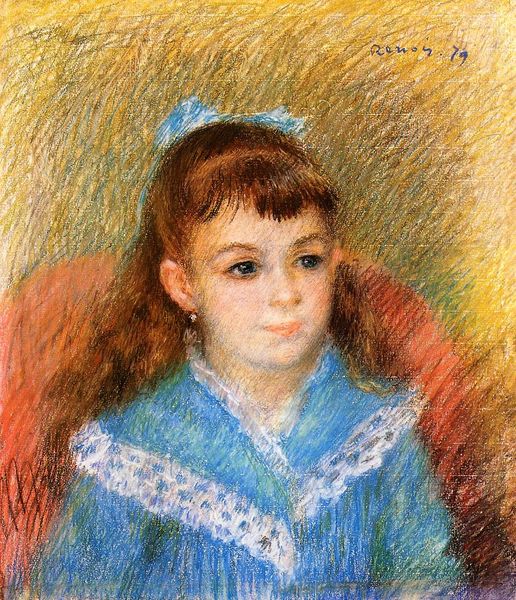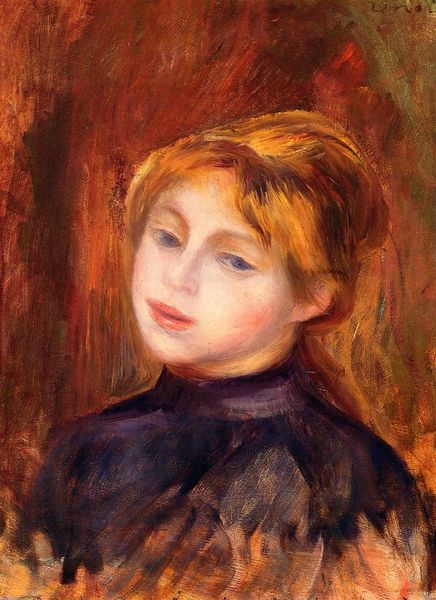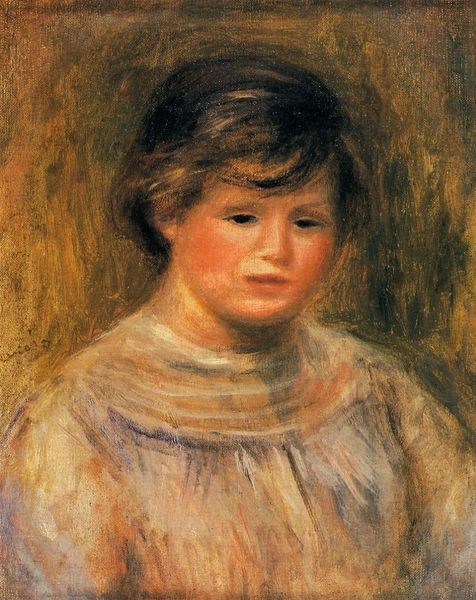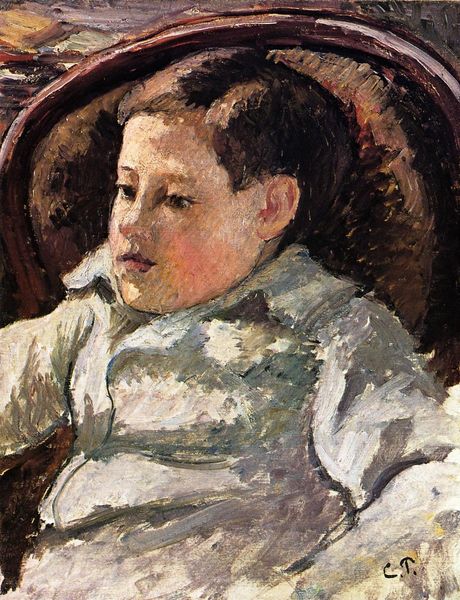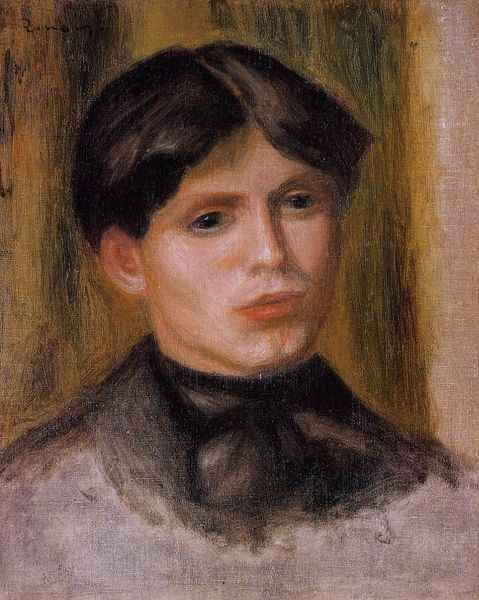
painting, oil-paint
#
portrait
#
painting
#
impressionism
#
oil-paint
#
oil painting
#
romanticism
Copyright: Public domain
Curator: At first glance, there’s a striking sensitivity to the quick brushstrokes. Almost as though the work is unfinished, revealing something inherently honest. Editor: Indeed. We’re looking at "Portrait of a Child," rendered in oil paint, and generally attributed to Pierre-Auguste Renoir, though the piece is undated. The beauty is, to some extent, in this ambiguous attribution. Curator: The blue backdrop almost overwhelms the subject, giving way to these radiant hues that play across the boy's features. It isn’t a static representation, it conveys the subtle nuances of adolescence and perhaps even commentary about his evolving class position. Editor: I am intrigued by the tilted profile. The averted gaze holds so much power. Traditionally, in iconic imagery, direct eye contact signified direct connection to the divine. Turning away, even slightly, represents more internal reflection and humanity, so his gesture invites contemplation, or even humility. Curator: And it pushes us to ask, who was this child and what was the world around him? Consider the legacy of child portraiture at this time in Europe and it's often steeped in wealth. How does this disrupt the image we often assume of upper-class portraiture and what does it tells us about who has the power to be visible in our societies? Editor: Note also the layering. It doesn’t attempt a perfect likeness but emotes one, like cultural memory working its way to the surface through visual symbols, such as the contrast of shadow and light we often see depicted to emulate a deeper moral compass or narrative arc in Renaissance art. Curator: Precisely. The visible brushwork signals an ongoing construction of identity, reminding us of the unfinished work of building ourselves and challenging assumptions we have about inherited position or circumstance. Editor: What emerges for me, when regarding such a portrait, is the artist allowing for change and interpretation. Rather than settling on one answer, the viewer feels involved in a dance that visualizes many sides. Curator: Exactly! I now appreciate the capacity for individual reflection the artist seemed intent on evoking by looking through a perspective based on visual language and inherited cultural markers.
Comments
No comments
Be the first to comment and join the conversation on the ultimate creative platform.

